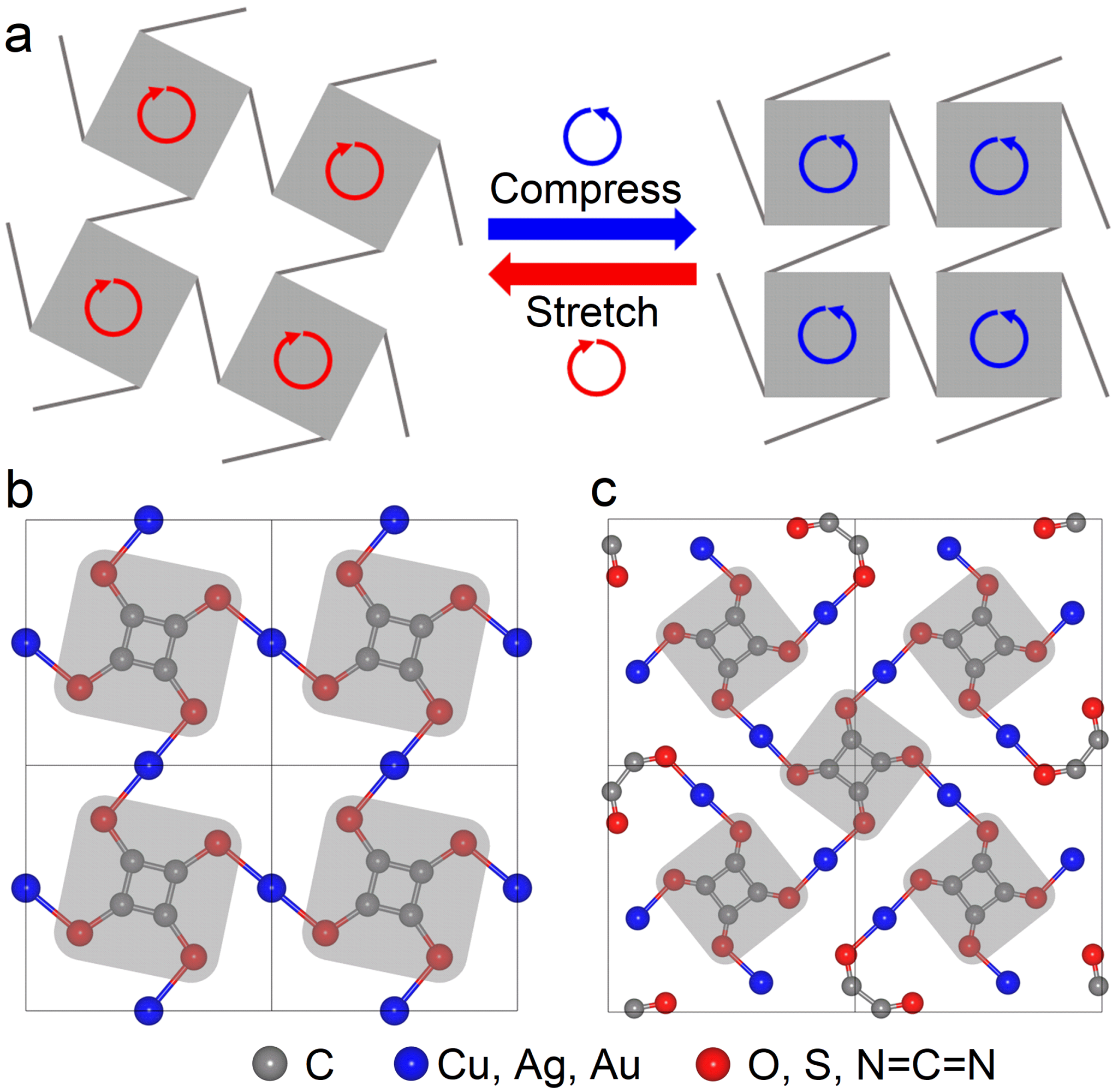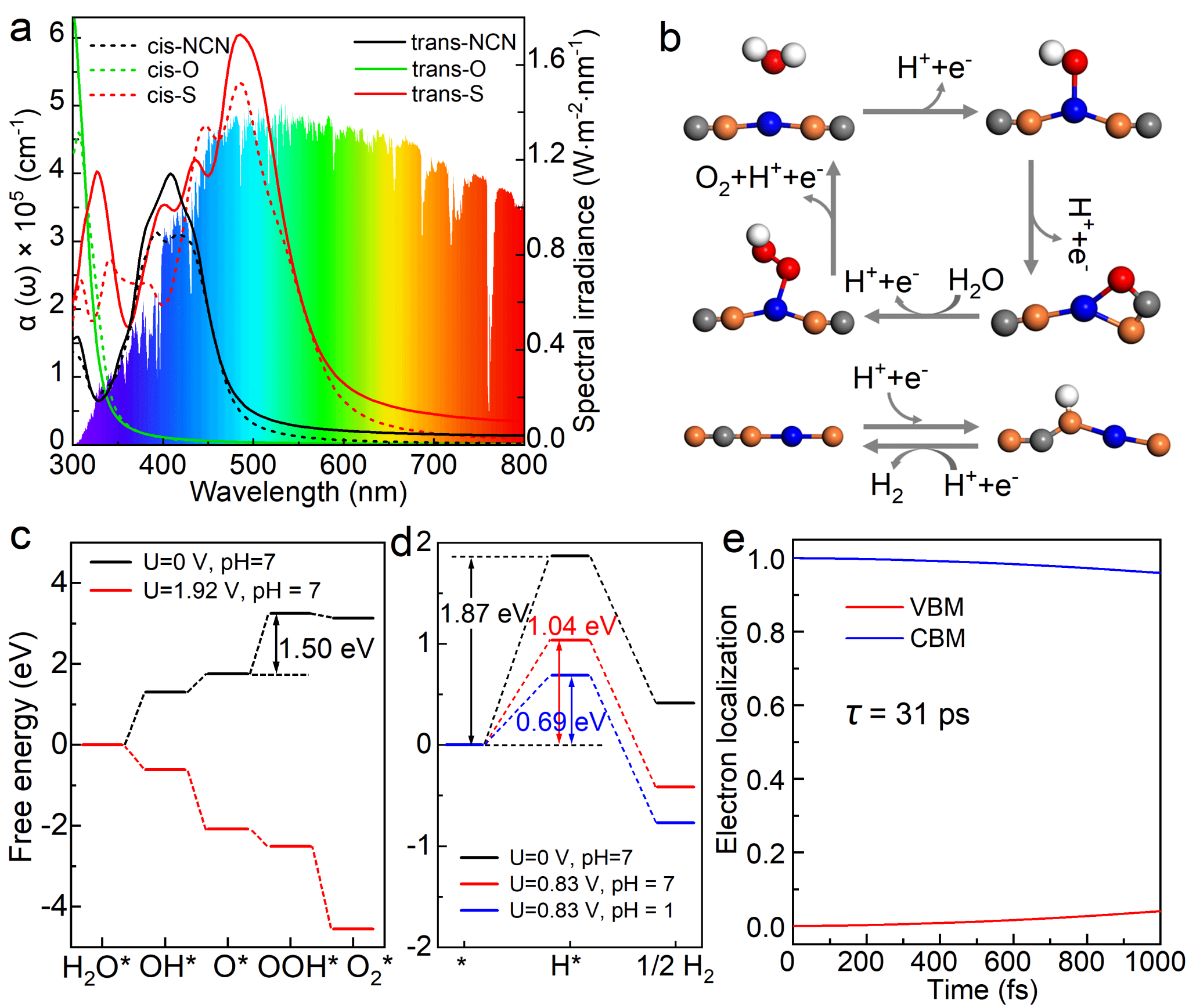A novel two-dimensional multifunctional semiconductor material based on metal-organic frameworks (MOFs) has been proposed by the Low-Dimensional Semiconductor Materials Design and Device Simulation team from the School of Physics at Hefei University of Technology. The related findings were published in 《Materials Horizons》 (IF = 12.2) under the title "Two-Dimensional Multifunctional Metal–Organic Framework with Large In-Plane Negative Poisson Ratio and Photocatalytic Water Splitting Properties."
Two-Dimensional Metal-Organic Frameworks (MOFs) are an emerging class of porous crystalline structures that have garnered significant attention in nanotechnology applications in recent years. By combining inorganic linkers and organic nodes, MOF materials are being extensively used in various fields such as novel electronic and optoelectronic devices, electrocatalysts, photocatalysts, sensors, and energy storage devices. 2D MOFs, with their excellent design flexibility, chemical tunability, and programmable characteristics, coupled with diverse synthesis methods, have become ideal platforms for the development of multifunctional two-dimensional auxetic materials. However, most of the reported inorganic auxetic materials still suffer from issues like low negative Poisson's ratio (NPR), poor flexibility, and limited functionality.

Figure 1: (a) The deformation mechanism of auxetic materials is driven by a rotational mechanism. The grey squares represent rigid units, while the black lines represent linear linkers. (b) Cis- and (c) trans- geometries of M2C4X4. Blue and grey spheres represent metal and carbon atoms, respectively. Red spheres represent functional groups −O, −S, and −NCN. Black lines indicate unit cells.
To address these issues, this work employs density functional theory (DFT) first-principles simulations to design a series of two-dimensional 2D MOFs with the molecular formula M2C4X4 (M = Cu, Ag, Au; X = O, S, NCN). These frameworks exhibit anomalous auxetic behavior, good flexibility, and suitable photocatalytic water-splitting properties. These M2C4X4 structures are assembled from carbon quadrilateral motifs and exist in both cis and trans isomers, with NPRs ranging from -0.17 to -0.90. Both isomers exhibit good flexibility, i.e., low Young's modulus and high fracture strength. In addition, their direct bandgaps, strong light-harvesting capabilities, and long excited-state lifetimes make them promising candidates for photocatalytic oxygen evolution reactions (OER). These findings provide a feasible strategy for the design and synthesis of new multifunctional optoelectronic materials.

Figure 2: (a) Light absorption coefficients of cis and trans Cu2C4X4 (X = NCN, O, S). The colored areas represent the reference solar spectrum irradiance under air mass 1.5 conditions. (b) Proposed photocatalytic pathway for the most energetically favorable adsorption intermediates (OH*, O*, and OOH*) on cis Cu2C4(NCN)4 for water oxidation. Grey, blue, orange, red, and white spheres represent C, Cu, N, O, and H atoms, respectively. (c) Free energy diagram of OER on cis Cu2C4(NCN)4 under different conditions. (d) Time-dependent electronic population of cis Cu2C4(NCN)4.
The first unit of this research is Hefei University of Technology, with physics graduate student Lin Wei as the first author. The corresponding authors are Professor Chen Zhao from the Department of Physics at Hefei University of Technology and Associate Researcher Wang Haidi from the same department, serving as co-corresponding authors. The research was supported by the National Natural Science Foundation of China, provincial key R&D projects, the Fundamental Research Funds for the Central Universities of Hefei University of Technology, as well as the Supercomputing Center of Hefei University of Technology and the University of Science and Technology of China.
Article link: https://doi.org/10.1039/D4MH01275E
Haidi Wang (Figures and text), Gao Weiqing (Reviewed)